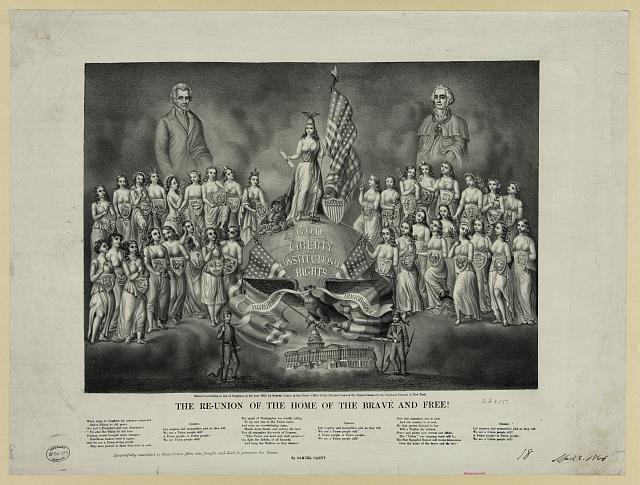It’s not all Copperheads and treason in March 1863, and the Conscription Act has yet to be implemented.
From The New-York Times March 20, 1863:
Another Union Demonstration.
Every few days now, we have a grand popular demonstration in behalf of the Union and the prosecution of the war, beside innumerable minor but not less valuable meetings held nightly in the various Wards of the City. The new vitality, the rising spirit, the hopeful unity, the growing determination of the people, is shown in nothing more strikingly than in this. The people never tire of them, but every meeting seems better and stronger than the one which went before.
The Loyal National League, which held its inaugural meeting at the Academy of Music last Saturday night, meets in its organized capacity at the Cooper Institute this evening. It is an Association open to all who are loyal, with no secrets and but one purpose, established to forward the interest of no man or party. Democrats, Republicans and Conservatives, men from the North and the South, meet together and join hands for mutual strength and support in upholding the great cause of national freedom and Union. It was two life-long Democrats who were the orators at the meeting last week, and two gallant Southern Unionists are to be the chief speakers to-night. We have no more effective popular orator in the country than Gen. HAMILTON, of Texas, and the fact that he is to speak to-night is enough to fill any building in New-York.
After fleeing Texas for Mexico, Andrew Jackson Hamilton:
… became a hero in the North and delivered speeches in New York, Boston, and other Northern cities. His rhetorical targets included slavery, disunionists, and the “slave power,” which he believed was trying to subvert democracy and the rights of non-slaveowners. After he met with President Abraham Lincoln in November 1862, he accepted a commission as brigadier general of volunteers and an appointment as military governor of Texas. Hamilton accompanied an unsuccessful federal expedition into South Texas in late 1863 and spent most of the rest of the war in New Orleans, where his family joined him late in 1864.
You can read the details of this 1863 image at the Library of Congress.

